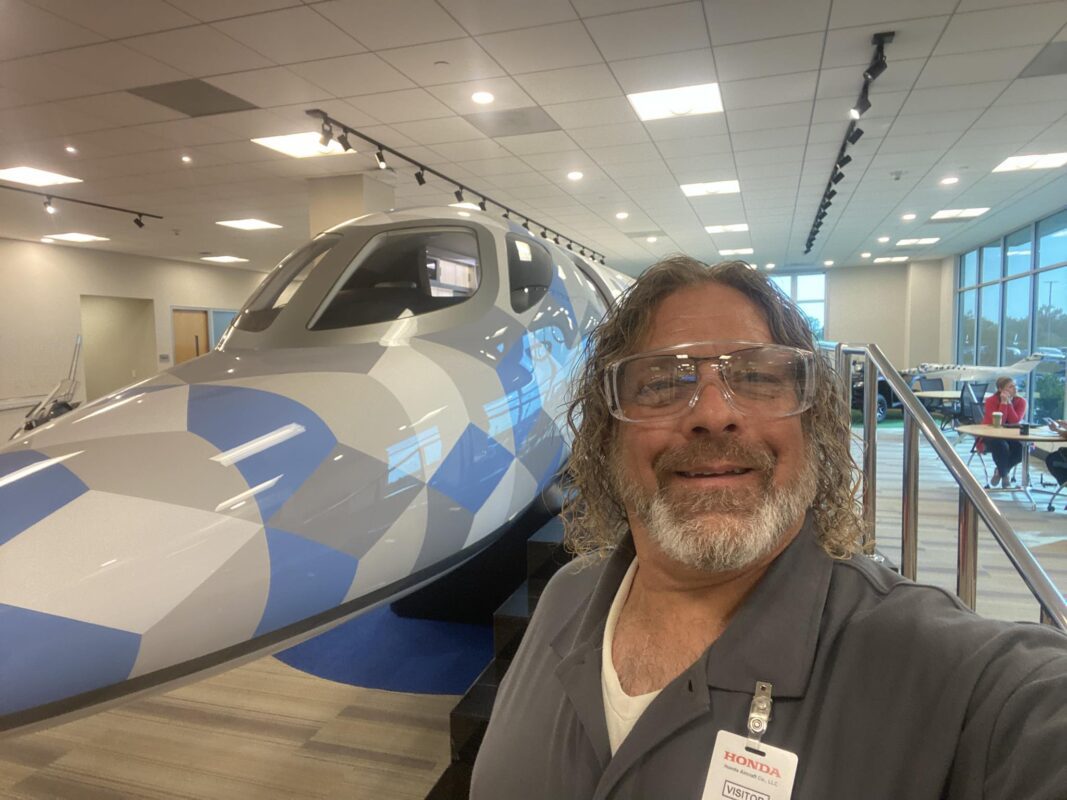Through three-week immersions with business and community partners, Kenan Fellows gain firsthand knowledge of how academic concepts connect to regional career opportunities for students. In this series, Kenan Fellows share what they learned, how it will shape their teaching, and the skills students need to thrive in a rapidly changing workforce.

This week, we are featuring Mark Case, a veteran science educator at Southern Guilford High School. This summer, Case was immersed in the world of aviation manufacturing at Honda Aircraft Company in Greensboro. His fellowship was made possible through support from the N.C. Department of Public Instruction.
From the Classroom to the Cockpit
Case witnessed every step of building an airplane from structural support to test flights, and he even got hands-on experience along the way.
“I was able to practice putting rivets into practice supports, apply sealant on gas tanks, and help thread a wire harness. Honda went above and beyond to make sure I was able to experience every aspect of the plane manufacturing process. I even had the chance to take a simulator test flight,” he recalled.
Desired Industry Skills
As he shadowed engineers, technicians, and staff across departments, Case discovered two valuable workplace expectations:
- Be on time.
- Take school seriously.
“The terms and vocabulary might be different, but the concepts I teach are used every day at Honda,” Case explained. “I need to be diligent to make sure students understand that what we learn in science class connects directly to industry.”
Employees at every level, from custodians to chief engineers, welcomed Case. “Every time I introduced myself as the Kenan Fellow, they were excited to meet me,” he said.
Surprises and Challenges
What surprised Case most was the energy of Honda’s workplace culture. “Every employee I met liked their job. They look forward to working. They go out of their way to help each other. I don’t remember the last place I’ve been where people truly want to be there.”
The biggest challenge, he admitted, was simply figuring out how best to contribute.
“They didn’t know what to do with me at first,” Case explained. “But they enjoyed hearing how education terms lined up, or didn’t, with industry [terminology]. For example, ‘diffusion’ in science class means something slightly different than ‘wave diffusion’ in aviation.”
The Big Takeaway: Building Pipelines
Case left with a clear sense of urgency: schools and industry must connect more directly.
“Guilford County Schools has the raw material: our students. Honda needs that raw material, refined into workers,” he said.
Bringing It Back to Students
Inspired by his experience, Case is developing new lessons around sound waves and their applications in aviation.
“Honda works to reduce noise and sound interference in the cockpit and cabin,” he explained. “Kids love music and always have earbuds in, but they don’t realize the long-term damage or the science behind it. I plan to use simple speakers and baking sheets to create Chladni plates that turn sound into visible patterns. We’ll explore constructive and destructive interference just like Honda engineers do.”
